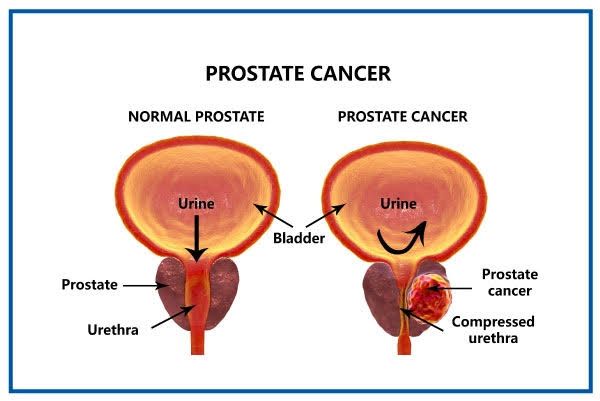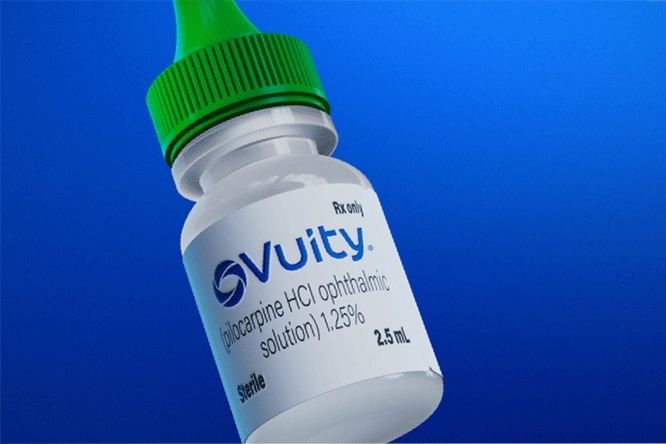
Prostatic carcinoma, or prostate cancer, is one of the most prevalent malignancies affecting men globally. A hallmark of this disease, particularly in its early to advanced stages, is its dependence on androgens—male sex hormones, primarily testosterone—for growth and proliferation. This androgen sensitivity forms the basis of hormonal therapy, also known as Androgen Deprivation Therapy (ADT), which has been a cornerstone of management for several decades.
The primary goal of ADT is to inhibit the signaling pathway of the androgen receptor, either by reducing the systemic levels of androgens to castrate levels or by blocking their action at the target cancer cell. As the disease progresses and potentially becomes resistant to initial hormonal manipulations (a state known as castration-resistant prostate cancer, or CRPC), cytotoxic chemotherapy becomes a critical therapeutic option.
Hormonal Agents for the Management of Prostatic Carcinoma
Hormonal therapy aims to disrupt the production or action of testosterone, thereby starving prostate cancer cells of the essential growth signals they require. These agents can be broadly categorized based on their mechanism of action.
Hormonal Agents:
- Gonadotropin-Releasing Hormone (GnRH) Agonists: These agents lead to medical castration by downregulating the pituitary gland’s production of luteinizing hormone (LH).
- Goserelin
- Leuprolide (or Leuprorelin)
- Triptorelin
- Buserelin
- Gonadotropin-Releasing Hormone (GnRH) Antagonists: These agents achieve medical castration by directly blocking GnRH receptors in the pituitary gland, avoiding the initial testosterone surge seen with agonists.
- Degarelix
- Relugolix (oral formulation)
- Anti-androgens (Androgen Receptor Antagonists): These drugs block testosterone and its more potent metabolite, dihydrotestosterone (DHT), from binding to the androgen receptor (AR) within prostate cancer cells.
- First-Generation Anti-androgens:
- Steroidal: Cyproterone Acetate
- Non-steroidal: Flutamide, Bicalutamide, Nilutamide
- Second-Generation (Novel) Anti-androgens: These have higher binding affinity and are effective in CRPC.
- Enzalutamide
- Apalutamide
- Darolutamide
- First-Generation Anti-androgens:
- Androgen Synthesis Inhibitors: These agents block the production of androgens in the testes, adrenal glands, and within the tumor itself.
- Abiraterone Acetate (inhibits the CYP17A1 enzyme)
- Ketoconazole (a less specific inhibitor, used historically)
- Estrogens: Historically used, but their significant cardiovascular side effects have limited their modern application.
- Diethylstilbestrol (DES)
- Surgical Intervention: For context, the gold standard for androgen deprivation is Bilateral Orchiectomy (surgical castration), which physically removes the primary source of testosterone production.
Mechanism of Action
Understanding how these agents work at a molecular level is crucial for appreciating their clinical application, efficacy, and potential side effects.
Mechanism of Action: Gonadotropin-Releasing Hormone (GnRH) Agonist (Goserelin)
The action of Goserelin is a sophisticated manipulation of the body’s natural hormonal regulatory system, the Hypothalamic-Pituitary-Gonadal (HPG) axis.
- The Normal HPG Axis: The hypothalamus produces GnRH in a pulsatile (intermittent) fashion. This GnRH travels to the anterior pituitary gland and stimulates its receptors, triggering the release of Luteinizing Hormone (LH) and Follicle-Stimulating Hormone (FSH). LH, in particular, signals the Leydig cells in the testes to produce and secrete testosterone.
- Initial Stimulation (The “Flare” Phenomenon): Goserelin is a synthetic analogue of natural GnRH. When it is first administered, it acts as a potent agonist, binding strongly to the GnRH receptors on the pituitary gland. This initial, powerful stimulation mimics a massive surge of natural GnRH, causing an acute increase in the secretion of LH and FSH. Consequently, this leads to a transient and paradoxical rise in serum testosterone levels. This “testosterone flare,” which can last for 7-10 days, may potentially worsen clinical symptoms, such as bone pain or urinary obstruction, and is often mitigated by the co-administration of an anti-androgen for the first few weeks of treatment.
- Pituitary Desensitization and Downregulation: The key to Goserelin’s therapeutic effect lies in its continuous, non-pulsatile administration. The continuous presence of a powerful agonist at the GnRH receptors leads to a profound homeostatic change in the pituitary cells. The receptors become desensitized and are internalized into the cell, a process known as downregulation.
- Achieving Medical Castration: After approximately 2-4 weeks of continuous therapy, the pituitary gland becomes refractory (unresponsive) to further GnRH stimulation. The production and release of LH and FSH plummet to negligible levels. Without the stimulatory signal of LH, the testes cease their production of testosterone. Serum testosterone levels fall by over 95%, reaching levels equivalent to those achieved by surgical castration. This state of “medical castration” effectively deprives the prostate cancer cells of their primary fuel source, leading to apoptosis (programmed cell death) and a reduction in tumor volume.
Mechanism of Action: Anti-androgens (Cyproterone Acetate and Flutamide)
Unlike GnRH agonists which lower testosterone production, anti-androgens work at the end of the pathway by directly interfering with the androgen receptor at the target cell.
A. Cyproterone Acetate (Steroidal Anti-androgen)
Cyproterone acetate possesses a dual mechanism of action, making it unique among anti-androgens.
- Competitive Androgen Receptor Antagonism: Its primary mechanism is to act as a competitive antagonist at the androgen receptor (AR). It binds to the AR located in the cytoplasm of prostate cancer cells, physically preventing testosterone and DHT from binding. By blocking this crucial step, it prevents the AR from undergoing the conformational change required for its activation, translocation to the nucleus, and binding to Androgen Response Elements (AREs) on the DNA. This inhibits the transcription of androgen-dependent genes responsible for cell growth, survival, and proliferation.
- Central Progestational Effect: As a steroidal compound with progestational properties, Cyproterone acetate also exerts a negative feedback effect on the hypothalamus and pituitary gland. This central action weakly suppresses the release of LH, thereby leading to a moderate reduction in testicular testosterone production. This dual action—central suppression and peripheral blockade—distinguishes it from non-steroidal agents.
B. Flutamide (Non-steroidal Anti-androgen)
Flutamide is considered a “pure” anti-androgen as it lacks significant hormonal activity beyond its AR blockade.
- Competitive Androgen Receptor Antagonism: Similar to cyproterone, Flutamide and its more active metabolite, hydroxyflutamide, act as competitive antagonists of the androgen receptor. They bind to the AR in the target prostate cell, forming an inactive drug-receptor complex. This prevents the binding of endogenous androgens (testosterone and DHT) and blocks the downstream cascade of gene transcription necessary for tumor growth.
- Lack of Central Suppression: A critical difference is that Flutamide does not suppress LH secretion. In fact, by blocking the negative feedback loop that testosterone normally exerts on the hypothalamus and pituitary, its use as a monotherapy can lead to an increase in LH levels and a compensatory rise in serum testosterone. For this reason, Flutamide is almost exclusively used in combination with a GnRH agonist or orchiectomy. This approach, known as Combined Androgen Blockade (CAB), ensures that testosterone production is suppressed centrally while any residual androgen (from adrenal sources or incomplete suppression) is blocked peripherally.
Anticancer Chemotherapeutic Agents
When prostate cancer progresses despite castrate levels of testosterone (CRPC), or for certain cases of very high-risk hormone-sensitive disease, cytotoxic chemotherapy is employed. These agents target and kill rapidly dividing cells, a characteristic of cancer.
Chemotherapeutic Agents:
- Taxanes: This class of drugs is the cornerstone of chemotherapy for advanced prostate cancer. They work by disrupting microtubules, which are essential components of the cell’s cytoskeleton and are critical for cell division (mitosis).
- Docetaxel: The established first-line chemotherapeutic agent for metastatic CRPC (mCRPC). It has been shown to improve survival and quality of life.
- Cabazitaxel: A second-generation taxane designed to be effective in tumors that have become resistant to Docetaxel. It is typically used as a second-line treatment after progression on Docetaxel.
- Platinum-Based Agents: These are not standard first-line treatments but may be used in specific clinical situations, particularly for aggressive variants of prostate cancer.
- Carboplatin: Often used in combination with a taxane (e.g., Docetaxel or Cabazitaxel) for patients with neuroendocrine or small-cell features, or for tumors with certain DNA repair defects.
- Cisplatin: Another platinum agent used in similar contexts as Carboplatin.
- Other / Historical Agents:
- Mitoxantrone: An older agent that was once used for palliative purposes to relieve bone pain in mCRPC. It offers limited survival benefit and has been largely superseded by taxanes and novel hormonal agents.
- Estramustine: A unique hybrid molecule that combines a nitrogen mustard (an alkylating agent) with an estradiol (estrogen). It has both antimicrotubule and weak cytotoxic effects. Its use today is very limited due to toxicity and the availability of superior alternatives.
Conclusion
The management of prostatic carcinoma is a dynamic and evolving field that relies on a deep understanding of its underlying biology. Hormonal therapy, centered on the principle of androgen deprivation, remains the foundational treatment for hormone-sensitive disease, utilizing sophisticated agents like GnRH agonists and anti-androgens to halt tumor growth. For patients who progress to castration-resistant disease, cytotoxic chemotherapy, led by the taxane family of drugs, provides a vital option to extend survival and manage symptoms. The continued development of novel hormonal agents, targeted therapies, and improved chemotherapeutic regimens promises an increasingly personalized and effective approach to treating this widespread malignancy.







